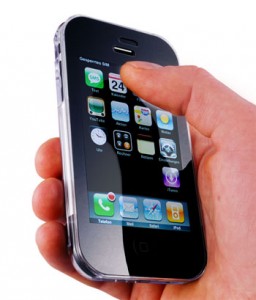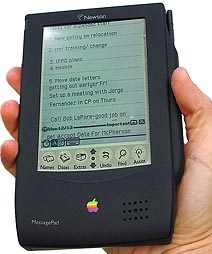Questions are fundamental to innovation; the two are inseparable. Right now, out there somewhere, someone is asking questions about how to do what you do better, faster, cheaper.
Whether you work on an assembly line, in a rock-and-roll band, or in a library, changes are being planned that will affect what you do, and the people making those plans are doing something very simple: They are asking questions. You need to ask questions, too.
The first and most important questions to get right are:
- “Who is the customer?” and
- “What matters to the customer?”
Sometimes the customer is hard to identify. Take clothing for toddlers, for example. Toddlers don’t buy the clothes they wear, and they rarely influence the decision making process by expressing a particular preference before the purchase is made. Therefore, the purchase decision for toddler clothing is usually made by a parent, a relative of the parents, or a friend of the parents.
 In the case of toddler clothes, the user is not the customer, and the user has no influence whatsoever over the purchase decision. (The toddler may express a distaste for a clothing item, but it comes after the purchase so it may affect future purchases but not the initial purchase). Take it from me, the most important feature of toddler clothing purchases is durability, especially durability in repeat washing – something about which no toddler would ever be concerned.
In the case of toddler clothes, the user is not the customer, and the user has no influence whatsoever over the purchase decision. (The toddler may express a distaste for a clothing item, but it comes after the purchase so it may affect future purchases but not the initial purchase). Take it from me, the most important feature of toddler clothing purchases is durability, especially durability in repeat washing – something about which no toddler would ever be concerned.
What about a company that makes siding for houses? A siding company may seek to improve competitive advantage by, for example, innovating in product durability or ease of installation. The former is important to homeowners and the latter is important to contractors and builders of large developments. Therefore, which innovations a siding manufacturer chooses to pursue depends on who they decide are their customers.
Another key question: “Why innovate?”
Sometimes the objective is pure avariciousness: more profit. Of course, profit is always present in the decision making process, but most likely there are additional objectives as well. The siding manufacturers mentioned above are trying to avoid price competition by differentiating themselves from each other.
 A soft drink company that substitutes less expensive corn syrup for sugar in a soda is simply trying to lower costs so it can increase profit margins, but if the company changes the size of the soda can when introducing that same soda into the Japanese market, the change has more to do with meeting the needs of local channel partners and distribution practices.
A soft drink company that substitutes less expensive corn syrup for sugar in a soda is simply trying to lower costs so it can increase profit margins, but if the company changes the size of the soda can when introducing that same soda into the Japanese market, the change has more to do with meeting the needs of local channel partners and distribution practices.
Now ask, “What is our purpose?” And think about that question in the context of how you will make yourself different.

Since Steve Jobs returned to Apple in the 1990’s, a major consideration in Apple’s new products, universally admired as innovative, has been style. Apple requires its product teams to subordinate technical creativity to usability and aesthetics. The major technical innovations are only important to the extent that they serve the design objectives, especially functionality and sexiness.
 Compare Apple’s Newton with its iPhone successor. Take a look at the pictures of the two devices with the hands normalized to (roughly) the same size. Consider the dimensions of the two instruments. Now look at the screen layout. Look at the styling of the cases. Think about the way users are expected to interface with the devices (stylus vs fingers). Consider the range of uses (apps) available for each and the ease with which users can add or remove functionality (and the ways that Apple makes money from the apps).
Compare Apple’s Newton with its iPhone successor. Take a look at the pictures of the two devices with the hands normalized to (roughly) the same size. Consider the dimensions of the two instruments. Now look at the screen layout. Look at the styling of the cases. Think about the way users are expected to interface with the devices (stylus vs fingers). Consider the range of uses (apps) available for each and the ease with which users can add or remove functionality (and the ways that Apple makes money from the apps).
Yes. Of course, the technologies that make the iPhone what it is today simply were not available 15 years ago when the Newton was first introduced. But don’t think for a moment that many consumers notice or care about the iPhone’s technology. Consumers are not interested in the geeky side of GPS services, super hardened glass, accelerometers, programming languages, or gesture interfaces; they care about maps that tell them where they are and how to get where they want to go, products that fit into their pockets, and getting to the information and services they need with as little time and effort as possible. They don’t care about 3G vs 4G LTE vs 4G; they care about how long it takes for maps or Facebook or photos to download and update.
What they care about is the look, the feel, the comfort, and the functionality of the device in their hand.
Steve Jobs and his product team played a simple thought game and asked what it was that consumers wanted from a smartphone. They decided that “cool” for the consumer is not the same as “cool” for an engineer. Consumers want ease of use, functionality, and sexiness.
The Newton came up short on all criteria. So Jobs killed it.
Since Apple introduced the iPad, Amazon, Barnes & Noble, Samsung, and Google have introduced products intended to compete with it. But are any of those products substantively different from the iPad? They may be simpler and cheaper, but they copy the fundamental features and functionality, in one way or another, of the iPad.
The iPad’s competitors do not rethink the questions “Who is the customer and what does he want?” the way the designers of the iPhone did. They see their purpose as making devices similar to the iPad. Therefore, they are not likely to change the tablet market the way the iPhone changed the cell phone market. But out there somewhere, someone – perhaps someone at Apple – is asking the questions. And eventually, change will come.
